

Frontend Application Security: Tips and Tricks
source link: https://blog.bitsrc.io/frontend-application-security-tips-practices-f9be12169e66
Go to the source link to view the article. You can view the picture content, updated content and better typesetting reading experience. If the link is broken, please click the button below to view the snapshot at that time.
Frontend Application Security: Tips and Tricks
A Comprehensive Guide to Application Security

We’ve seen one of the worst years in terms of attacks and security breaches, with the average data breach cost reaching as far as $4.45 million!
Since everything nowadays runs on computing and relies on interconnected systems to provide cutting-edge business services to keep up with the never-ending demand set by customers, it is no surprise that businesses need to adopt state-of-the-art technologies to stay ahead of their competition.
Not only does this demand call for innovative services, but it also calls for rapid development and faster rollout times where functionality may be prioritized over other aspects, such as security.
Even if this was not the case, attackers have been relentlessly targeting web applications to gain a competitive advantage, gain sensitive information, or disrupt businesses.
What is the importance of Frontend Application Security?
We understand that most businesses leverage advanced technologies to keep their businesses ahead of their competition; it is also essential to know how crucial implementing or maintaining frontend application security is to being able to secure these applications against modern-day attackers.
With numerous noteworthy attacks over the past decade and countless data breaches, the sheer importance of frontend application security can’t be understated.
From Server-Side Request Forgery (SSRF) vulnerabilities on Azure services to vulnerabilities in WordPress plugins that compromised over 17,000 WordPress sites, vulnerabilities and threats to application security are around every corner.
Successful exploitation often leads to a multitude of issues for the businesses, including but not limited to the following:
- Data Breaches
- Financial Losses
- Reputational Damage
- Regulatory Compliance Issues
- Supply Chain Disruption
What are Some Common Issues With Frontend Security?
There are countless issues that are linked to Frontend security that could cause significant issues to the entire application. However, the following are some of the most prevalent problems that must be considered when considering Frontend security.
- Cross-Site Scripting (XSS)
- Cross-Site Request Forgery (CSRF)
- Injection Attacks
- Insecure Direct Object References (IDOR)
- Insecure Authentication and Session Management
- Third-Party Component Risks
1. Cross-Site Scripting (XSS)
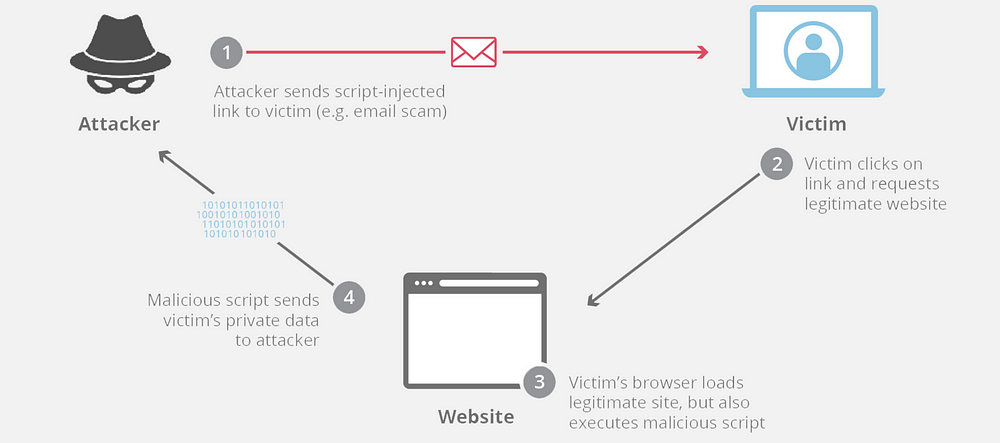
This type of vulnerability allows attackers to inject malicious scripts into web pages viewed by other users, thereby leading to a range of attacks such as data theft, session hijacking, and even website defacement within the context of the victim’s browser.
There are some common causes for XSS vulnerabilities to be introduced into an application. Some of these are:
- Insufficient Input Validation: Failure to properly validate and sanitize user-supplied input opens the door to XSS attacks. Without proper validation, attackers can inject malicious scripts across a variety of input channels, including URL parameters, form fields, and HTTP headers.
- Improper Output Encoding: Insecure processing of output data allows attackers to insert malicious scripts, which are subsequently executed by unsuspecting users’ browsers. Failure to correctly encode user-generated content before displaying it in an HTML context is a typical mistake that results in XSS vulnerabilities.
- Lack of Content Security Policy (CSP): Content Security Policy is a security technique that prevents XSS attacks by restricting script execution to a whitelist of trustworthy sources. The absence or misconfiguration of CSP headers makes applications vulnerable to XSS attacks.
2. Cross-Site Request Forgery (CSRF)
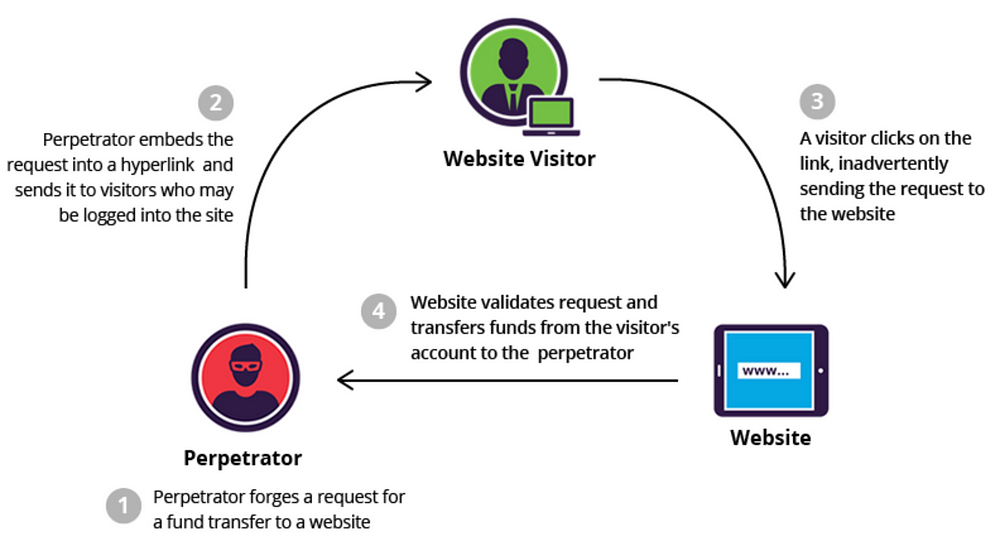
Unlike Cross-Site Scripting attacks, Cross-Site Request Forgery (CSRF) attacks trick authenticated users into unknowingly executing unwanted actions such as transferring funds, changing account settings, or submitting forms.
This attack typically happens when an attacker crafts a malicious web page or email containing a request targeting a legitimate website’s vulnerable action. The malicious request is executed when the victim visits this malicious web page while being logged into a legitimate website. Since the victim’s browser automatically includes the authentication token in the request, the website processes this malicious request as if the user initiated it.
Some common oversights that cause this type of attack are:
- Missing CSRF Tokens: Failure to include CSRF tokens on crucial requests exposes frontend applications to CSRF attacks. CSRF tokens are unique, unpredictable values used to confirm the validity of requests.
- Predictable CSRF Tokens: Using predictable or easily guessed CSRF tokens reduces usefulness and allows attackers to spoof legitimate requests.
- Cookie-based Authentication: Websites that rely only on cookie-based authentication are especially vulnerable to CSRF attacks because the browser automatically adds session cookies to the domain in all requests, regardless of source.
3. Injection Attacks
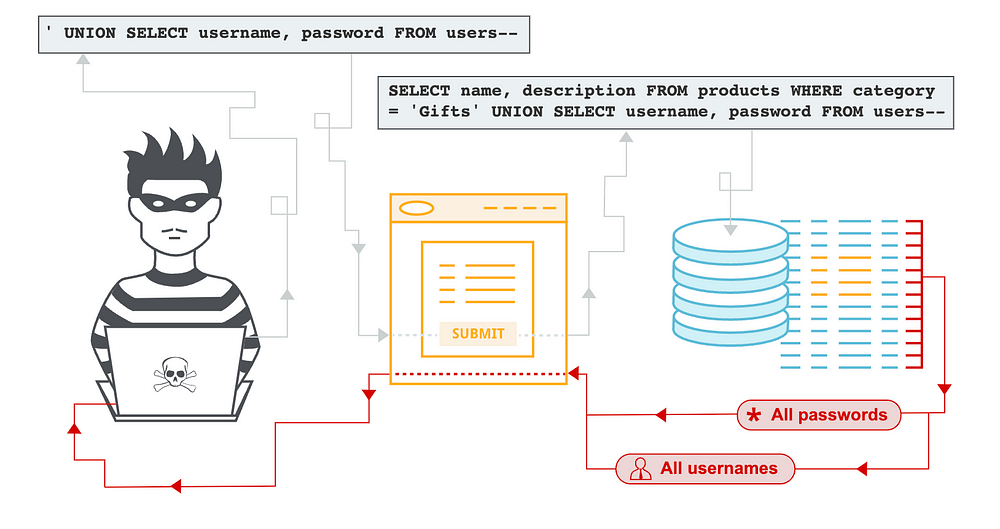
As the name implies, injection attacks or vulnerabilities allow an attacker to inject malicious code or commands into the application’s input fields, exploiting vulnerabilities in data processing mechanisms.
This is one of the most common forms of vulnerability that can be present in an application and has also been added to the OWASP Top 10 list of vulnerabilities.
Even though there can be several injection attacks, such as SQL, Command, or even XPath injections, the principle behind the vulnerability remains the same.
Some of the most common causes for injection vulnerabilities include:
- Lack of Input Validation: Failure to properly verify and sanitize user input before processing allows attackers to introduce harmful payloads into application input fields.
- Dynamic Query Construction: Applications that dynamically generate SQL queries, shell commands, or XPath expressions from user input are particularly vulnerable to injection attacks.
- Insufficient Escaping: Insecure handling of special characters, or inability to escape user input before combining it into queries or instructions, opens programs to injection attacks.
4. Insecure Direct Object References (IDOR)
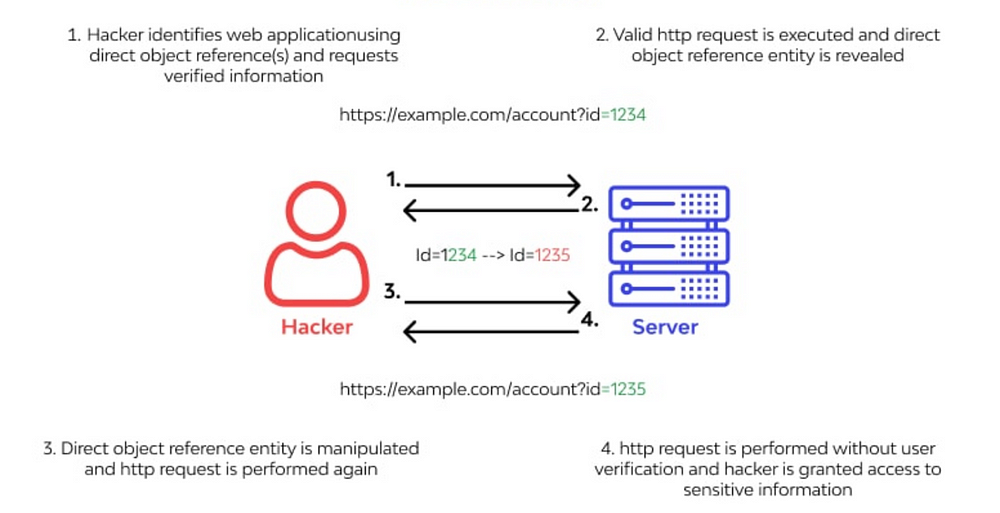
This type of vulnerability occurs when the application exposes internal object references in a predictable or unauthenticated manner, allowing attackers to manipulate these references to gain unauthorized access to sensitive data or resources.
IDOR works when internal object references such as database keys or file paths are directly exposed to users without proper authorization checks. This way, attackers can access these resources by guessing or incrementing values to access these resources.
Common causes of IDOR vulnerabilities include:
- Lack of Access Controls: Failure to implement sufficient access controls or permission procedures allows users to access internal object references without suitable validation directly.
- Predictable Object References: Applications with predictable or sequential object references, such as sequential database keys or predictable file paths, are more vulnerable to IDOR attacks.
- Insecure Direct Links: Direct links or URLs that expose internal object references without adequate authentication or authorization might result in IDOR vulnerabilities.
5. Insecure Authentication and Session Management
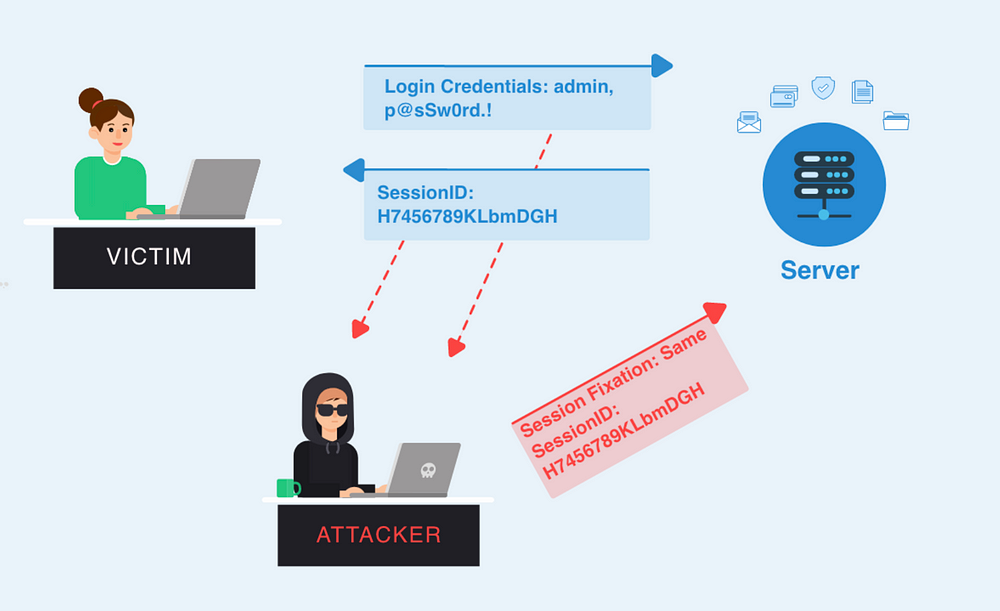
These vulnerabilities allow attacks to bypass or masquerade valid sessions and users into gaining unauthorized access to sensitive resources. This type of vulnerability has been persistent for a long time and has also been mentioned within the OWASP Top 10 list of vulnerabilities and on the OWASP Top 10 for APIs.
Some common causes for these vulnerabilities include:
- Session Fixation: Improper management of session IDs, such as failing to regenerate session tokens after authentication or utilizing predictable session identifiers, can expose applications to session fixation attacks. Attackers can take over user sessions by altering or guessing session tokens.
- Persistent Cookies: Persistent cookies with no expiration dates or long periods raise the possibility of unauthorized access and account compromise. Attackers can steal persistent cookies saved on users’ devices and exploit them to get continued access to their accounts.
- Insufficient Account Lockout Mechanisms: A lack of account lockout methods and insufficient rate limits on login attempts might make user accounts vulnerable to brute-force assaults. Attackers can keep guessing passwords until they gain unauthorized access to user accounts.
6. Third-Party Component Risks
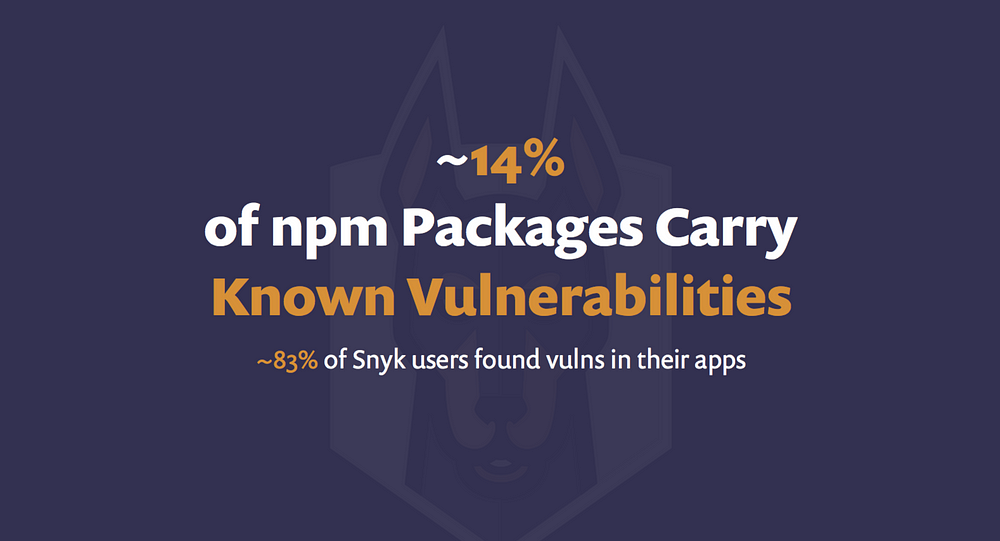
Almost all modern-day applications use third-party components such as libraries, frameworks, plugins, and APIs to accelerate development and enhance functionality. Even though these components have their benefits, they can also introduce inherent security risks that could jeopardize the applications’ security and integrity.
Some of the most common risks brought in by third-party components are:
- Security Vulnerabilities: Third-party components may have security flaws, or authentication bypasses that attackers might use to compromise the application.
- Outdated or Unsupported Versions: Using obsolete or unsupported versions of third-party components increases the risk of security vulnerabilities, as patches and updates that address known vulnerabilities may not be applied.
- Supply Chain Attacks: Attackers may compromise the software supply chain by injecting malicious code or backdoors into third-party components, resulting in widespread security breaches or data exfiltration.
What are some tips & tricks to mitigate frontend security threats?
Now that we have looked at the most common threats to frontend security, we will look into the various aspects of securing frontends.
- Zero Trust Architecture: Adopt the Zero Trust architecture, which assumes that every person, device, and network request is untrusted by default. Use stringent access restrictions and authentication procedures to verify the identity of users and devices before providing access to resources.
To find out more about zero trust architecture for frontends, checkout this article:
- Regular Security Audits and Code Reviews: Perform frequent security audits and code reviews to detect vulnerabilities, improper coding practices, and potential security flaws. Engage security professionals or utilize automated technologies to do complete security evaluations on the codebase.
- Implement Content Security Policy (CSP): Implement a Content Security Policy (CSP) to reduce the risk of Cross-Site Scripting (XSS) attacks by restricting the sources from which content may be loaded. Configure CSP directives to restrict script execution and reduce the effect of XSS vulnerabilities.
- Input Validation and Output Encoding: Implement thorough input validation to ensure that user-supplied data conforms to expected formats and does not include malicious payloads. To avoid XSS attacks, ensure that output data is appropriately encoded. Use context-specific encoding routines, such as HTML entity encoding or JavaScript escaping.
- Secure Session Management: Implement secure session management techniques, such as session expiration, inactivity timeouts, and session regeneration upon authentication. To prevent session theft via XSS attacks, save session tokens securely on the server and avoid using client-side storage techniques.
- Update Dependencies and Libraries: Regularly update third-party dependencies, libraries, and frameworks to ensure that known vulnerabilities are swiftly fixed. Use package managers and dependency management tools to track and manage dependencies efficiently.
- Educate and Train Developers: Provide security awareness training to developers to help them understand common security threats, best practices, and secure coding principles. Encourage a security culture within the development team and take proactive security measures.
For a deeper dive on improving app security, checkout this security:
Conclusion
It’s important to understand that this list is only the tip of the iceberg and that more risks need to be looked into for a more comprehensive approach to frontend security.
One of the comprehensive sources that you can look through is the OWASP Top 10 lists for both web applications and APIs which provide an exhaustive list of the most common attack techniques and potential mitigate strategies.
I hope you have found this helpful.
Thank you for reading!
Recommend
About Joyk
Aggregate valuable and interesting links.
Joyk means Joy of geeK